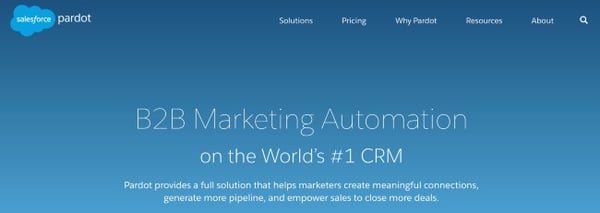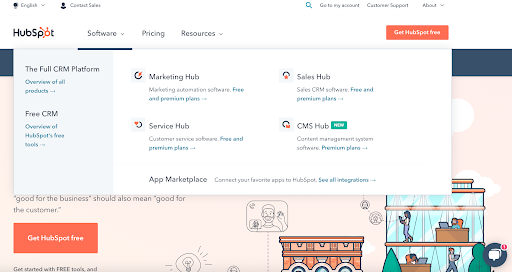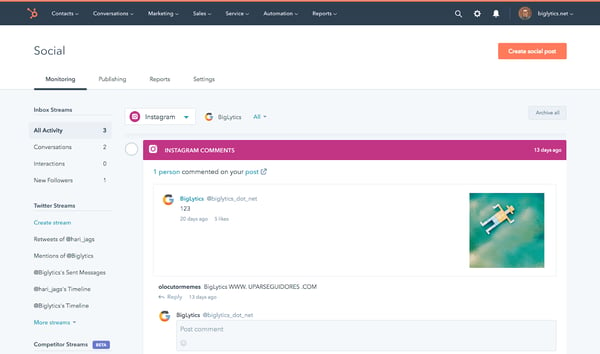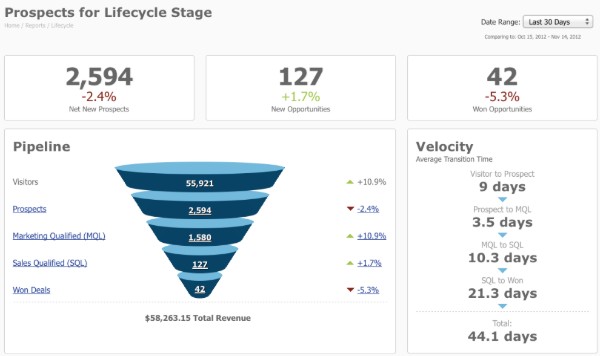HubSpot vs. Pardot: Which is Better for Marketing Automation?
Written by
Why HubSpot? And how do you even compare HubSpot vs. Salesforce’s Pardot?
It’s a question we get from clients and prospects, whether they’re evaluating Salesforce’s CRM or they already use it.
Salesforce is the industry leader for CRMs, so it’s rational to ask whether it makes sense to use Pardot (which Salesforce owns) or HubSpot marketing tools, or whether it’s smart to switch over to HubSpot CRM entirely.
It’s tempting to think it would be logical to just forge ahead and use Pardot, if you’re already using Salesforce CRM.
If only the answer were so simple.
The truth is, your choices of CRM and marketing software will have immediate and long-term consequences. So it’s important to make a clear-eyed Pardot vs. HubSpot comparison.
In this article, we’ll evaluate the most important comparisons between HubSpot’s marketing platform and Pardot — two major marketing automation software suites.
What is Pardot?
Pardot is a marketing automation platform that came into existence in 2006. In October 2012, ExactTarget bought Pardot, and in June 2013, Salesforce bought ExactTarget.
Pardot’s current features center around a focus on email marketing, lead generation, and marketing automation. Acquired nearly 15 years after the founding of Salesforce, Pardot is now positioned as the Salesforce marketing automation suite for B2B companies.
What is HubSpot?
Founded in 2006, HubSpot started with a focus on inbound lead generation via blogging and social media. It has since grown into an all-in-one, user-friendly customer relationship management (CRM) platform and content management system (CMS).
HubSpot CRM includes website CMS, social media management, and email marketing tools, along with tools for sales and customer service teams that all work together seamlessly at every touchpoint between your organization and your contacts.
The bottom line: In the world of inbound marketing, HubSpot marketing software is widely regarded as the gold standard.
Comparing HubSpot and Pardot by Key Marketing Functionalities
Lead Generation
HubSpot’s focus is on generating inbound leads. It includes an integrated set of tools designed to create and deploy content for a marketing experience that guides users along their buyer journeys.
Some of the tools include website hosting, a blogging platform, email marketing, landing pages, forms, chatbots, automation workflows, smart and/or personalized content, lead scoring, and A/B and adaptive testing.
An ideal goal for HubSpot users is to provide relevant, helpful content that provides enough value that it makes visitors want to convert to receive even more valuable advanced content. Other conversion tools for marketers include:
- Chatbots
- Pop-ups
- Blog subscriptions
- Contact forms
- Pay-per-click (PPC) integration (with Google Ads, Facebook, and LinkedIn)
- And more
HubSpot’s tools are easy to use right out of the box. They also offer opportunities to customize the look of website pages, blogs, landing pages, and forms as a company grows, as well as a template marketplace where marketers can purchase layouts and templates created by design pros.
.png?width=600&name=pasted%20image%200%20(1).png)
Simple changes like color schemes and copy changes are incredibly easy to make. More customization and automation rules are available — these can require some training and support from a HubSpot partner agency.
Pardot supports lead generation with similar tools (such as landing pages, email, workflows, A/B testing, etc.). But, because Pardot doesn’t host your main website, the tools aren’t directly integrated with the rest of your company’s online presence.
The difference matters. Using Pardot, landing pages are typically hosted on a subdomain or other third-party domain — separate from your website, creating a disconnected experience. Tracking across domains is possible, but cumbersome.
In an age when user experience is everything (both for marketers and for those we’re trying to reach), any disconnect creates a hazard. It can create unnecessary drag on your SEO efforts, compared with having all your content on the same domain.
Social Media Management
Both Pardot and HubSpot offer social media posting and monitoring for Twitter, LinkedIn, and Facebook. HubSpot also offers Instagram scheduling and more integrations, but Pardot’s social media management tools are sufficient to manage a company’s basic social media presence.
Both platforms can benefit from a third-party integration, such as Hootsuite, for businesses that require a more robust solution to meet more demanding social media promotions.
.png?width=600&name=unnamed%20(1).png)
Website Hosting
HubSpot makes constant improvements to its website platform. It offers high-quality templates for companies just launching a website, whose marketers don’t have time to spend on a custom setup. They also offer a growing marketplace of templates, themes, and modules, many available at no additional cost.
At the same time, HubSpot’s customizable development platform can support almost any type of company page you can imagine wanting to build.
Pardot offers very basic site.com templates; if you want to create a website, you’ll need a third-party solution such as a website from WordPress or SquareSpace. As a developer who has worked with all these tools, I can personally attest to how these web platforms pale in comparison to HubSpot’s website-building capabilities.
For a more detailed CMS comparison, check out this article:
THE BEST MARKETING CMS PLATFORM: HUBSPOT CMS HUB COMPARISON
Reporting
Out of the box, HubSpot Marketing Hub offers better reporting than Pardot, letting you see what needs attention from a broader, big-picture perspective with Dashboards and content Attribution reports, as well as drilling deeper with campaign and tactic-specific reports for marketing emails, social, and blogs.
Pardot’s reports are able to give you similar information, but they require more customization to make the data actionable.
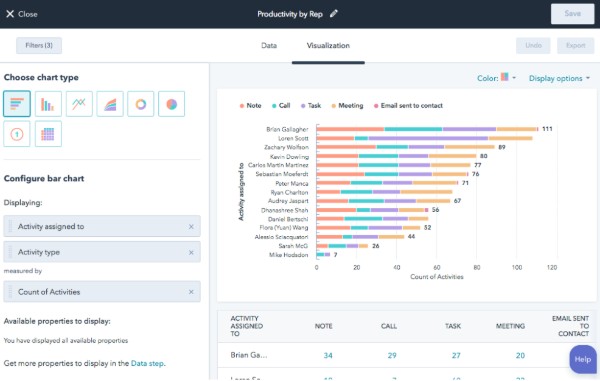
Price
Both HubSpot and Pardot use a tiered pricing model. HubSpot Marketing Hub starts at $50 a month for the most basic model, and increases in cost as you add contacts. It includes the CRM. Recent HubSpot pricing updates now mean that users only pay for the contacts they actually market to (rather than by the total number of contacts, both marketing contacts and non-marketing contacts, you have in the system).
Most B2B industrial companies we work with at Weidert Group require the capabilities of Marketing Professional Hub (which starts at $800 a month) to achieve their business growth goals. HubSpot customers can add Sales and Service hubs as they grow.
Pardot pricing starts at $1,250 a month.
Both systems also offer various advanced features as add-ons — and naturally, that affects costs. Overall, HubSpot is typically less expensive, especially for companies that are just starting with a CRM. That makes HubSpot an ideal solution for SMBs and mid-market businesses. HubSpot’s own side-by-side comparison shows a 45% savings, on average, compared to Salesforce and Pardot.
HubSpot or Pardot — How Should You Choose?
One primary driving factor to consider when determining which platform to use for your marketing automation software is this: Are you already heavily using Salesforce?
If you are, you may want to consider Pardot. Since it’s built with Salesforce in mind, its integration is on point.
On the other hand, if you have Salesforce but you’re not a super-user, HubSpot should be a serious consideration — for its integration capabilities as well as its advanced inbound marketing functionality. HubSpot’s integration will serve you well if you can define how you want the two platforms to communicate and operate together.
And if you’re just getting started with a CRM or you’re looking to make a change, HubSpot offers a better all-in-one, out-of-the-box solution that is less expensive and can grow with you over time.
Still not sure? We’re happy to consult with you about your choices, taking into account your B2B inbound marketing strategy, with an eye toward ensuring that your CRM and marketing automation tools get along and work together — with each other and with your marketing and sales teams!
Even the most effective tools can only do their best work when they’re put to use in conjunction with sound strategy. You can learn more about the inbound marketing flywheel methodology, and how you can align your efforts in marketing, sales, and customer service to reduce friction, increase momentum, and grow your business. Just click the link below to access the webinar.
Subscribe To Our Blog
Information. Insights. Ideas. Get notified every time a new Weidert Group blog article is published – subscribe now!
You May Also Like...

Artificial Intelligence
Revenue-Driving B2B Content Marketing Strategy with Andy Crestodina

Artificial Intelligence
AI Agents Are Here—How Smart Businesses Are Using Them Now

Inbound Marketing
Podcasting Playbook: What We Learned After 100 Days of Running a B2B Podcast
Accelerate Your Growth with
Weidert Group
If you’re ready to explore a partnership, request a personalized consultation with our team.
